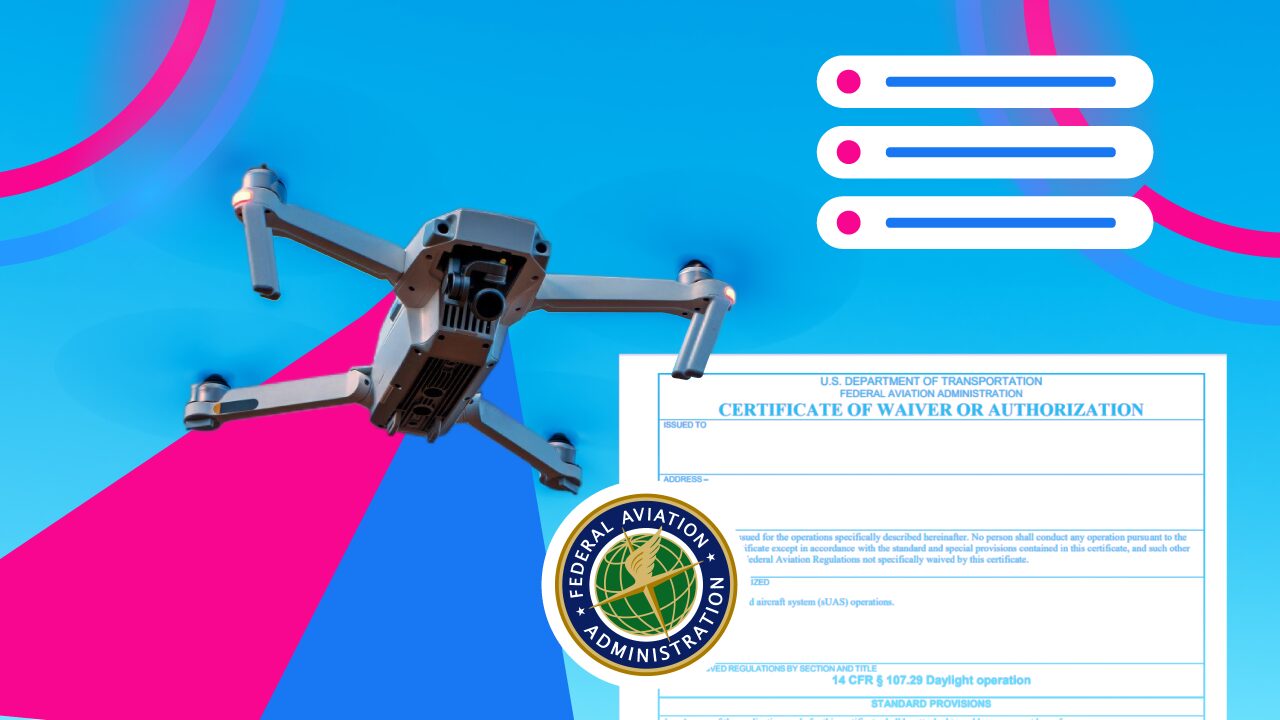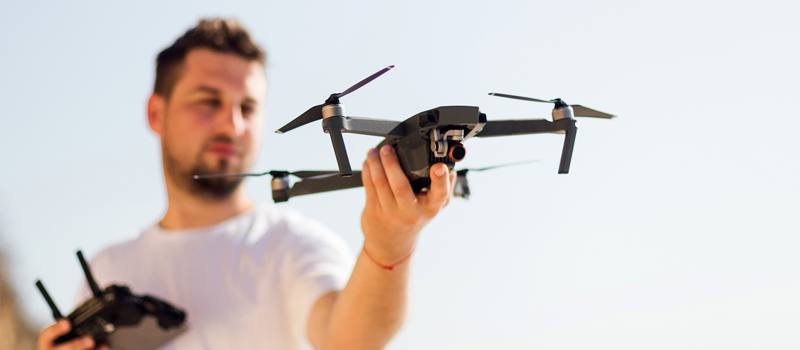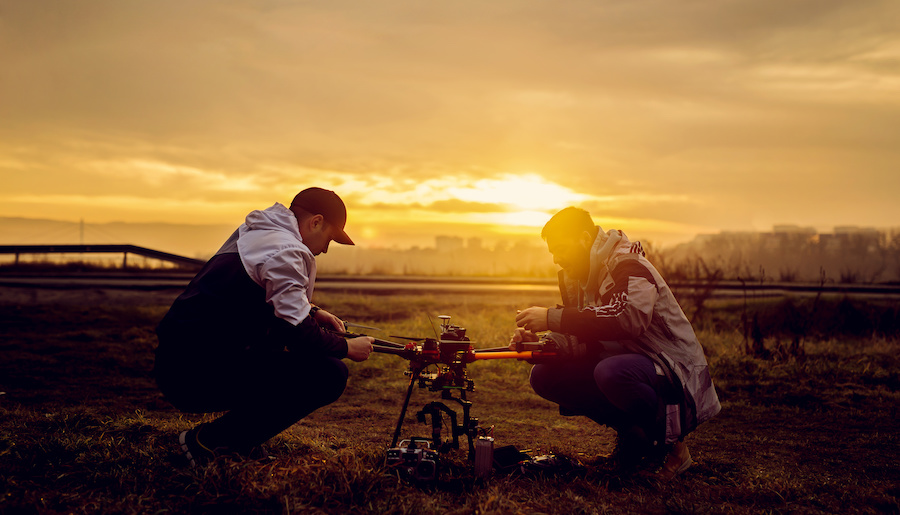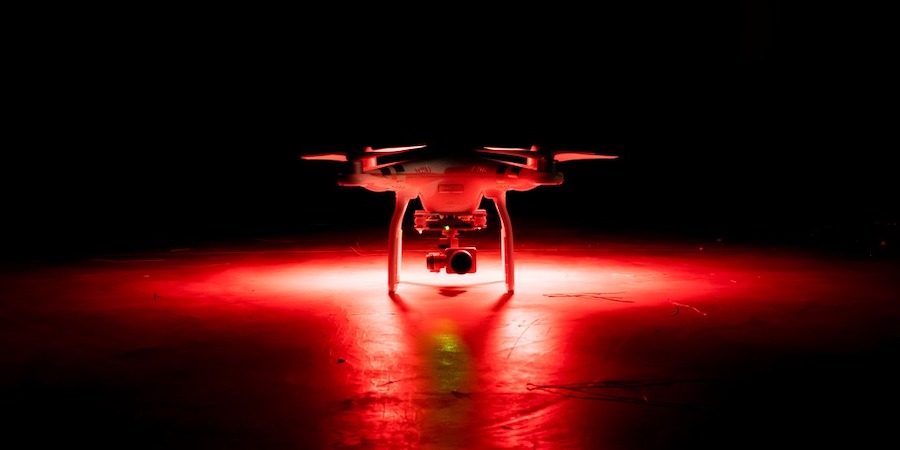Part 107 provides a fairly rigorous set of rules for commercial UAS flight but did you know that you can still fly outside of these rules? There is a legal way to do so, and that is by applying for a Part 107 waiver.
Applying for a Part 107 waiver can take a significant amount of work from preparing the documentation to implementing additional safety measures in the field. Here’s a way to improve your chances of getting that waiver – let’s take a look at the waivers that the FAA has granted so far.
Key Takeaways
- The rules for Part 107 waivers have changed over the years, and some old rules no longer need to be waived under certain circumstances.
- There is an increasing number of commercial drone operators requesting for UAS operations beyond visual line of sight.
- The number of waivers that the FAA is granting has also seen a year-to-year increase, perhaps a good indicator of increasing activity in the commercial drone industry.
Is a Waiver Still Necessary for Night Flights?
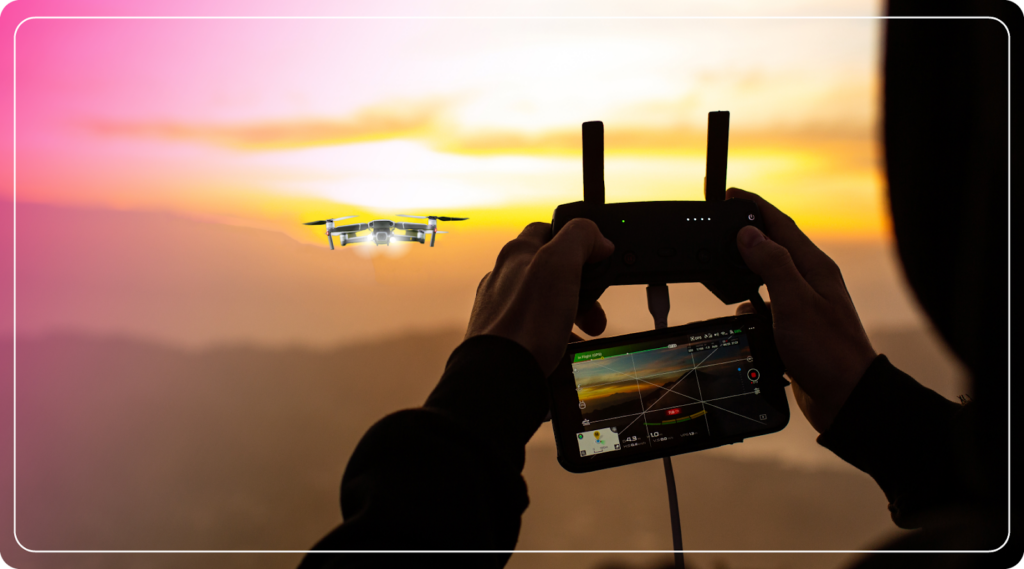
Before you look at today’s Part 107 waiver numbers, here’s the key update: you usually do not need a waiver to fly at night anymore. Since the 2021 rule change, you can operate at night under 14 CFR 107.29 as long as you meet the night requirements, including proper night training and anti-collision lighting.
When you do need a Part 107 operational waiver (for other rule sections), the application process has shifted. Part 107 operational waivers are submitted through the FAA’s Aviation Safety Hub (aviationsafetyportal.faa.gov), where you can apply and track your waiver.
Is a Waiver Needed for Operations Over People?
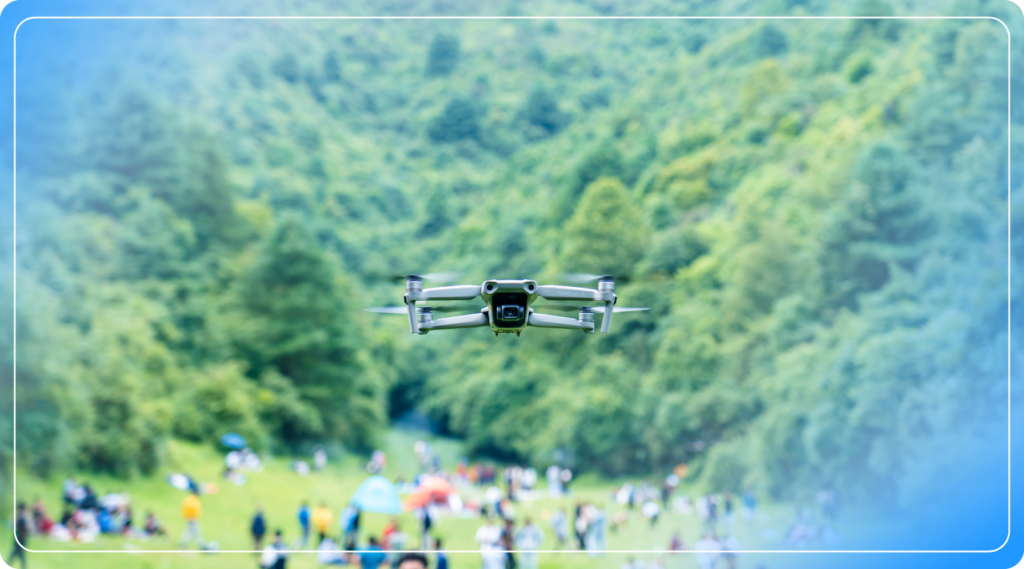
Now that Remote ID is in full effect, it is technically possible to fly a UAS over people as long as you comply with the conditions for the Category of the UAS you are operating. Outside of the established rules for each Category, you will still need to secure a waiver.
Which Provisions of Part 107 Can Be Waived?
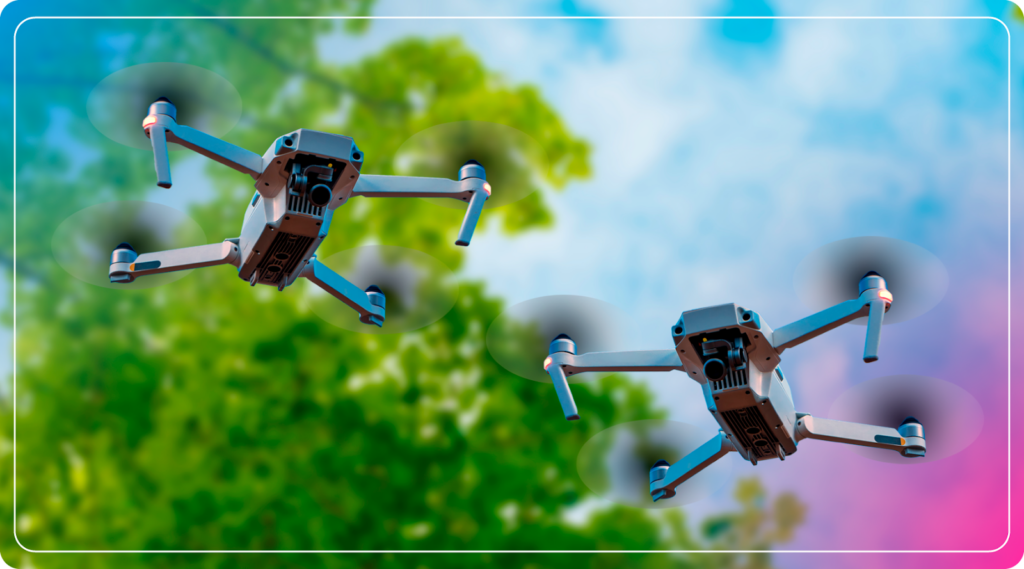
The FAA maintains a list of the rules under Part 107 that can officially be waived:
- § 107.25 – Operation from a Moving Vehicle or Aircraft
- § 107.29(a)(2) – Operation at night
- § 107.29(b) – Operation at Night
- § 107.31 – Visual Line of Sight Aircraft Operation
- § 107.33 – Visual Observer
- § 107.35 – Operation of Multiple Small UAS
- § 107.39 – Operation over human beings
- § 107.51 – Operating Limitations for Small Unmanned Aircraft
- § 107.145 – Operations Over Moving Vehicles
Take note that the rules for UAS operations at night and operations over human beings are still included in the list. As mentioned, waiver-free flight under these conditions is only legally allowed under specific safety guidelines. Otherwise, a waiver will still be needed.
How Many Waivers Has the FAA Granted?
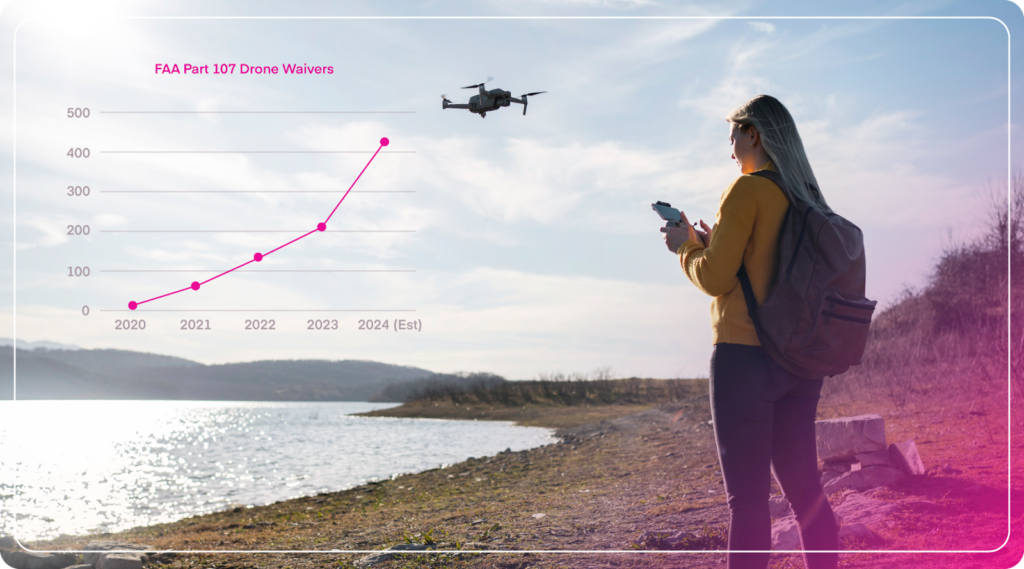
The current list of approved Part 107 waivers that the FAA maintains accounts for 575 approved waivers since 2020 as of May 2024. Expired waivers are no longer on the list.
However, a past feature that we published in January 2020 states that there were around 3600 waivers granted at that time, more than 95% of which were for UAS operations at night. The second most common approved waivers back then were for UAS flights over populated areas – with 98 waivers, accounting for about 2% of the total.
Take note that some of the waivers were applied for multiple provisions, thus the total of all waivers when broken down per Part 107 rule will be significantly higher than the actual number of waivers granted.
| Part 107 rule | Description | No. of waivers granted |
| 107.25 | Operation from a Moving Vehicle or Aircraft | 9 |
| 107.29 (a)(2) | Fly a small UAS at night without anti-collision lighting | 68 |
| 107.29 (b) | Fly a small UAS during periods of civil twilight without anti-collision lighting | 67 |
| 107.31 | Fly a small UAS beyond your ability to clearly determine the position, altitude, attitude, and movement of the UAS, with unaided vision. | 284 |
| 107.33 | Use a visual observer without following all visual observer requirements | 30 |
| 107.33(b) | Use a visual observer without operating in the manner specified under 107.31 | 121 |
| 107.33(c)(2) | Use a visual observer without the remote pilot in command to maintain awareness of the UAS by visual observation | 97 |
| 107.35 | Fly multiple small UAS with only one remote pilot | 145 |
| 107.39 | Fly over a person with a small UAS which does not meet conditions of operational categories 1, 2, 3, or 4 | 37 |
| 107.51(a) | Fly a small UAS over 100 miles per hour ground speed | 12 |
| 107.51(b) | Fly a small UAS over 400 feet above ground level | 127 |
| 107.51(c) | Fly a small UAS with less than 3 statute miles of visibility | 28 |
| 107.51(d) | Fly a small UAS within 500 feet vertically or 2000 feet horizontally from clouds | 20 |
| 107.145 | Fly over moving vehicles with a small UAS which does not meet conditions of operational categories 1, 2, 3, or 4 | 33 |
The clear leader in terms of the number of waivers provided is for UAS operations beyond visual line of sight (107.31), accounting for 284 waivers or more than 25% of the total waivers granted.
There is also good representation for UAS operations during civil twilight without the aid of anti-collision lighting (121 waivers), operations of multiple UAS by one pilot (145 waivers), UAS flights with less than 3 statute miles of visibility (127 waivers), and UAS flight beyond the visual contact of visual observers (121 waivers).
There is a growing trend toward UAS operations beyond visual line of sight, including the scope of visual observers and weather conditions. This opens up a lot of horizons for UAS operations, such as drone delivery, emergency response, and automated drone surveillance.
| Year | No. of parties that received Part 107 waivers |
| 2024 (YTD) | 173 |
| 2023 | 207 |
| 2022 | 132 |
| 2021 | 61 |
| 2020 | 14 |
It has also been very interesting to see the rapid year-to-year growth of the number of waivers that the FAA has been awarding. This can be ascribed to either a relaxing of the rules by the FAA or simply a growing volume of UAS operators flying commercially. In any case, this is a positive sign for the commercial drone industry.
Conclusion
The Part 107 rules have evolved greatly since 2016, and so has the environment for applying for waivers from the FAA. Waivers remain a very important provision for Part 107, allowing UAS operators to fly outside the usual rules but in a legal manner.
Looking at the numbers and types of waivers that the FAA has granted in the past years gives us some insight into the ongoing trends in the commercial drone industry. If you are a commercial UAS operator, then it is also very useful to know what other operators are doing.
